When we planned our 4-day trip to Porto, we were mainly in search of the famous Port Wine in the Porto region. Porto is known for its port wine production and is very proud of its famed sweet alcoholic drink. But being the second-largest city in Portugal, Porto has many other interesting facts beyond the Port Wine. The stately bridges, the medieval Ribeira (riverside) in the old city centre, the merchants’ houses and cafes, etc. are full of characters and charms.
Th Douro River goes through the city of Porto. The famous bridge Ponte Dom Luís I links the old city centre and the new part, Vila Nova de Gaia. Since attractions are everywhere in the city, tourists can buy a Porto transportation card to get around in Porto. It is valid for 1 to 4 days and has benefits of using the public transport system, having 150 discounts, including free access to several museums and discount prices on a visit to a port wine cellar.
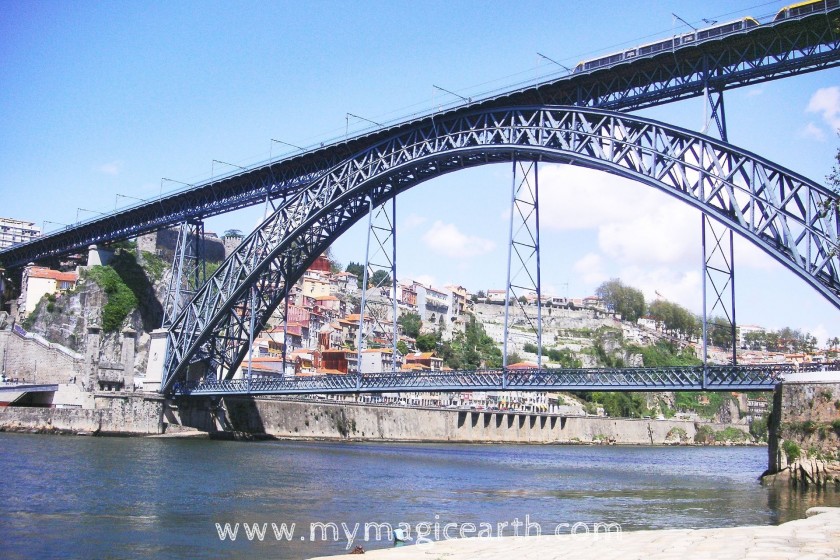
The highlights of our Proto day trip
We did not follow a special route described in many travel guides. Our walking trail through the city mainly included the following highlights:
- Igreja dos Carmelitas and Igreja do Carmo, the churches for monks and nuns
- The University of Porto, the second-largest Portuguese university
- Livraria Lello, the bookstore with iconic red stairway
- Clérigos Church and Tower with panoramic views
- Avenida dos Aliados, a grandiose avenue
- Igreja de Santo António dos Congregados with azulejo tiled facade
- São Bento Station with 20,000 tiles depicting the historical scenes
- Palácio da Bolsa with a hall that attempts to copy Grenada’s Alhambra Palace
- Praça da Ribeira, the true heart of the old city
- Dom Luís I Bridge, a double-deck metal arch bridge
- Scenic riverside road Cais de Gaia
- Wine tasting in Calem
Igreja dos Carmelitas and Igreja do Carmo, the churches for monks and nuns
The first building popped into our sight was the Igreja dos Carmelitas. The baroque building connects to its twin churches by a house. Church Igreja dos Carmelitas on the left and Igreja do Carmo on the right. The creative construction was to prevent the two churches sharing a common wall, thus to avoid any relations between the nuns of Igreja dos Carmelitas and the monks of Igreja do Carmo.
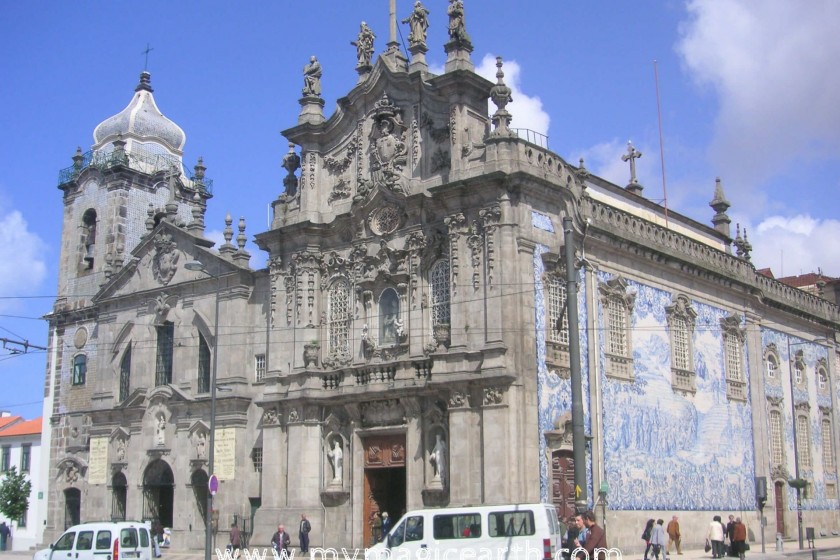
The University of Porto, the second-largest Portuguese university
We walked along the street Praça de Gomes Teixeira toward the south. On the right side is the University of Porto.
Inaugurated on 16 July of 1911, as a result of the newly implanted republican system, the University of Porto is the second-largest Portuguese university by the number of enrolled students, after the University of Lisbon.
Livraria Lello, the bookstore with iconic red stairway
On the right side of the street Praça de Gomes Teixeira, opposite the university, is the ornate bookstore with an iconic red stairway.
The bookstore’s exterior has a mixed architecture from Neo-Gothic and Art Nouveau elements while the interior implies Art Deco elements. When you walk through the doors of this bookstore, you’ll notice a forked staircase connecting to a gallery on the first floor with a detailed wood spindle. Over this staircase is a large stained glass window. It is considered as one of the best bookstores in the world by Lonely Planet.
If you are a fan of Harry Potter, join the Harry Potter Tour to explore the city of Porto through the lens of the magical world of Harry Potter. The magic Lello Bookstore is believed to have inspired multiple places in the Harry Potter world.
Clérigos Church and Tower with panoramic views
Passing the Praça de Lisboa, at the crossing of R. das Carmelitas and Rua dos Clérigos is the next site, the Clérigos Church and Clérigos Tower.
Clérigos Tower is the bell tower of the Baroque Clérigos Church. You will not miss this tower because you can see it from various points of the city. The Clérigos Church was built between 1754 and 1763. The Clérigos Tower is 75.6 metres high. Buy the entrance ticket online, and climb up 225 narrow steps, you can enjoy panoramic views of Porto from the top of the tower.
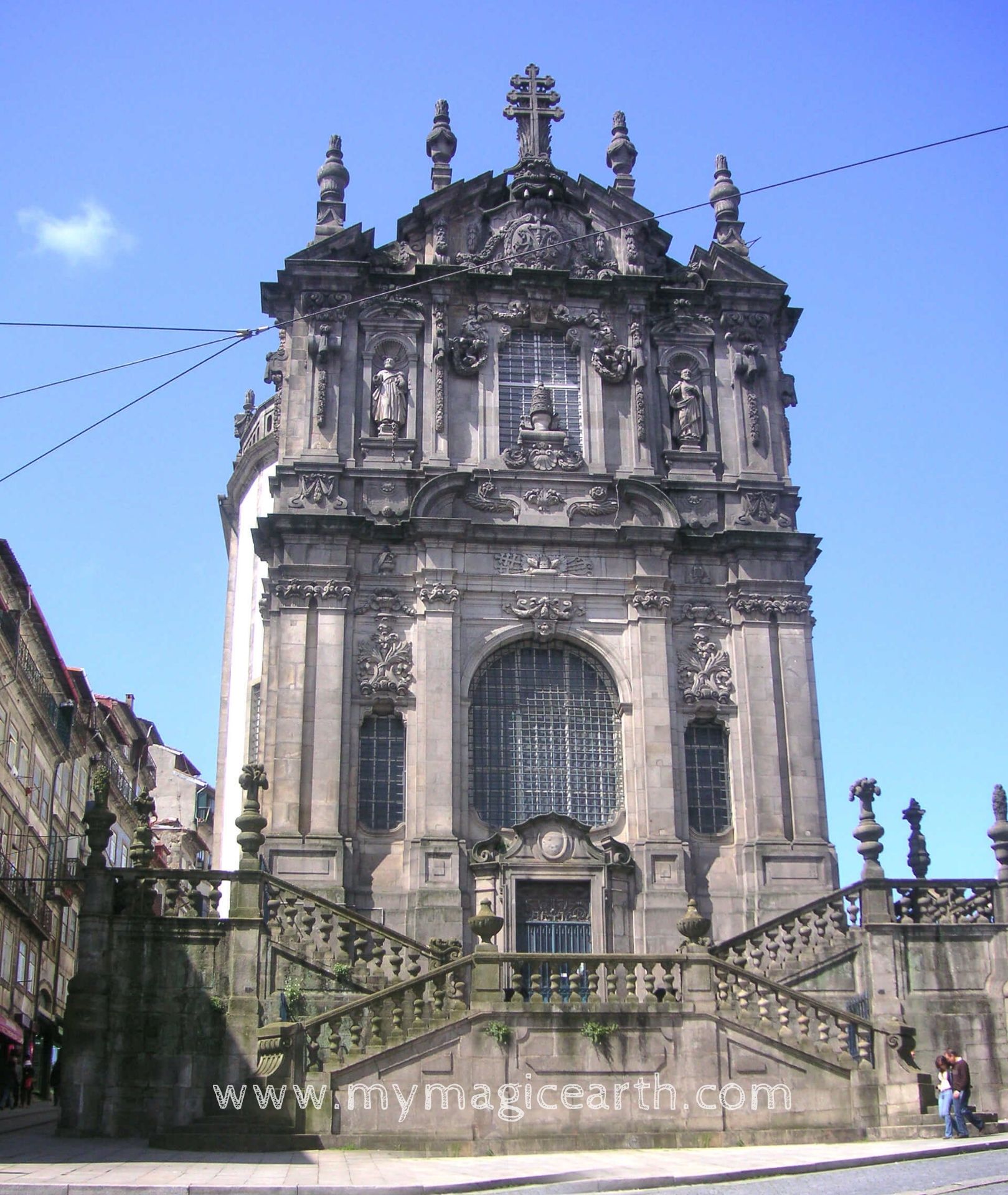
Avenida dos Aliados, a grandiose avenue
We walked parallel to the river and toward the east side. It is just a hundred metres to the street of Praça da Liberdade, which extends to Aliados Avenue.
Aliados Avenue is generally regarded as the most grandiose avenue. A mixed range of architectural styles, from neoclassical to French Beaux-arts dominate this avenue. It is home to some of the city’s most prestigious hotels, banks, and insurance companies, etc.
The name of this central boulevard translates as “Avenue of the Allies”. It refers to the oldest alliance in the world made between Portugal and the United Kingdom in the 14th century.
Porto Macdonald’s – Imperial Cafe on Praça da Liberdade is also very famous for its interior design. Its ceiling is adorned with crystal chandeliers, and the wall above the menu boards has the beautiful art deco stained glass.
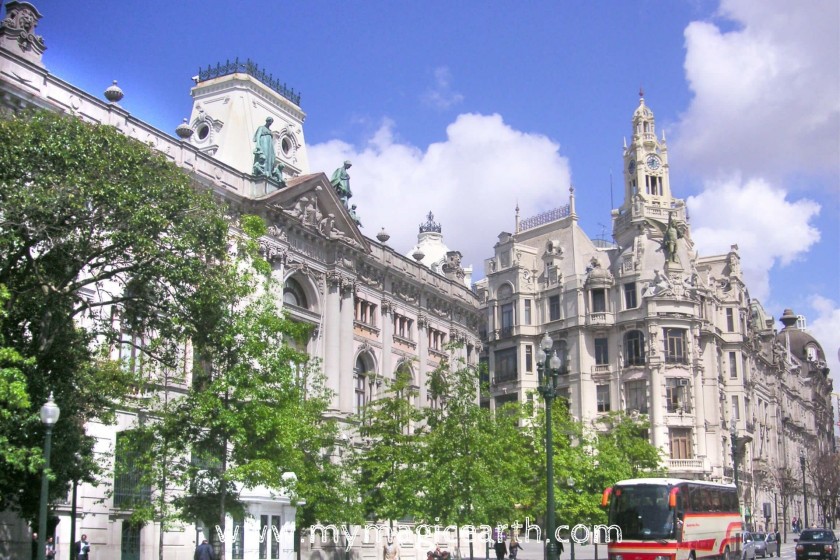
Igreja de Santo António dos Congregados with azulejo tiled facade
At the crossing of Praça de Almeida Garrett and Praça da Liberdade is the Church of Santo António dos Congregados with its azulejo tile decorated facade.
Azulejos tiles are on the interior and exterior of churches, palaces, monuments, benches, walls, etc. They are just everywhere. Some of the tiles portray religious scenes, and others have geometric designs or flowers. The other famous place we also saw azulejos tiles was the well-known facade of Igreja dos Carmelitas.
If you have kids traveling with you, you can discover Porto on an elegant and touristic train to see all these sites.
São Bento Station with 20,000 tiles depicting the historical scenes
The famous São Bento Station is just a few steps away form the Church of Santo António dos Congregad.
Designed by the local architect Jorge Colaço in 1930, some 20,000 tiles depict the history of transport in Portugal, the country’s landscapes ,and Portugal’s historical battles.
Built on the site of a 16th-century Benedictine monastery, São Bento Railway Station was opened to the public in 1916. The main hall is breathtaking. With over 20,000 tiles, it depicts historical battles as well as the history of transport. Designed by the local architect Jorge Colaço in 1930, the São Bento Railway Station has much of the influence coming from the French Beaux-Arts style.
Palácio da Bolsa with a hall that attempts to copy Grenada’s Alhambra Palace
The old town centre continues to the riverside. Next to the Praça do Infante D. Herique is the massive neoclassical building Palácio da Bolsa.
Palácio da Bolsa used to be the symbol of commerce when Porto was the business capital of the country during the nineteenth century. Built as the former stock exchange, the prose of this building was to impress and earn the credibility of European investors. But now it is the headquarters of Porto’s Commercial Association, still symbolizing the commerce.
The interior design of the palace is grandiose. The hall has Moorish interiors that attempted to copy Grenada’s Alhambra Palace. It is now the grand reception room of the city where receptions of heads of state and other luminaries take place.
For a few dollars, you can take a guided tour of the Palácio da Bolsa, one of Portugal’s most important historical monuments.
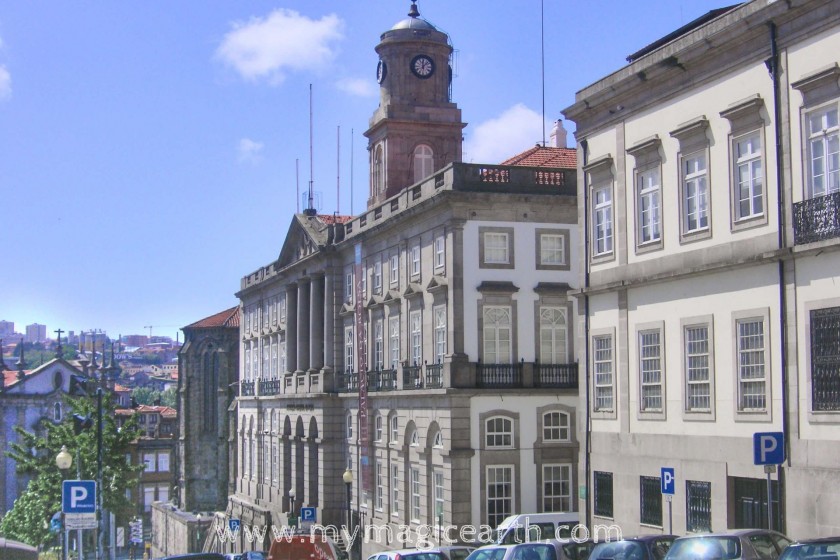
Praça da Ribeira, the true heart of the old city
Having walked the narrow streets in the shadow of the granite building in downtown Porto for good two hours, we approached the Ribeira without even looking for it.
The historic square is surrounded by the postcard buildings north of the Douro river. Great restaurants, cafes, bars and craft shops by the river open throughout the day but also open at night. They provide a fantastic view of the Douro River. When the evening starts, it gets very busy because it is one of the meeting places for the evening activities. And If you join a Fado Show, you will immerse yourself in Portuguese culture and tradition at a historical Fado show.
Walking alongside the river, we enjoyed the privileged view of the famous Luis I Bridge and the newest Infante D. Henrique Bridge. The illuminated bridges at night are even more magnificent. The Ribeira is the true heart of the old city.
There were some old Rabelo boats loaded with Port Wine barrels, standing in front of the Douro’s bank. For centuries, they were the mean of transportation that delivered people and goods along the Douro River. Today, the winemakers still use them for transporting the wine barrels.
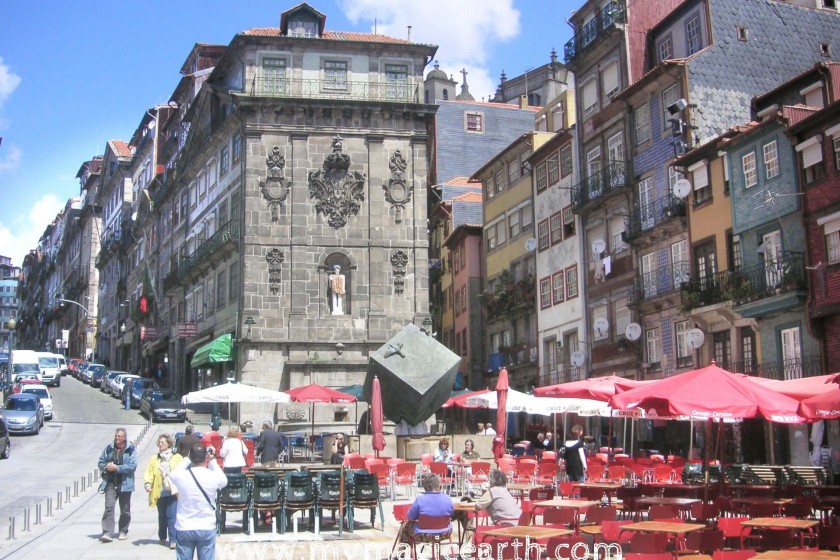
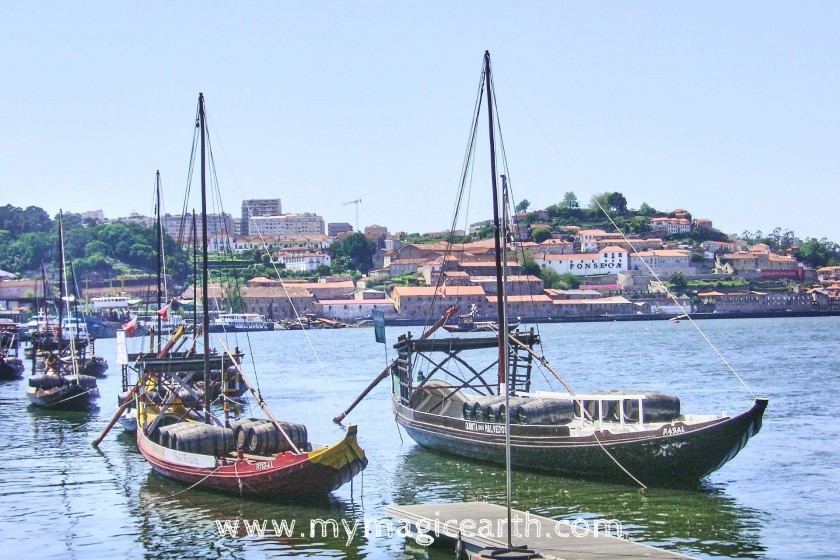
Dom Luís I Bridge, a double-deck metal arch bridge
Having admired the bridge from the riverside, we made our way to the upper level of the Dom Luis Bridge. The Dom Luís I Bridge is a double-deck metal arch bridge that spans the River Douro between the cities of Porto and Vila Nova de Gaia in Portugal. The surface of the bridge has asphalt pavement for vehicular traffic. The modern Metros run on the bridge. Next to the tram track, it is the pedestrian area. The best picture point for both sides of the river is from this bridge.
The colourful buildings in the historical centre are on one side of the bridge. On the other side, the hill of Gaia is covered with orange roofs marking the presence of the famous Port wine cellars. It’s an unforgettable view.
Not far from the Dom Luís I Bridge is the Infante Bridge. Compared to the Dom Luís I Bridge, it has an amazingly simple style. The beauty of its elegant and thin shape is so exceptional that it stands out in every possible way.
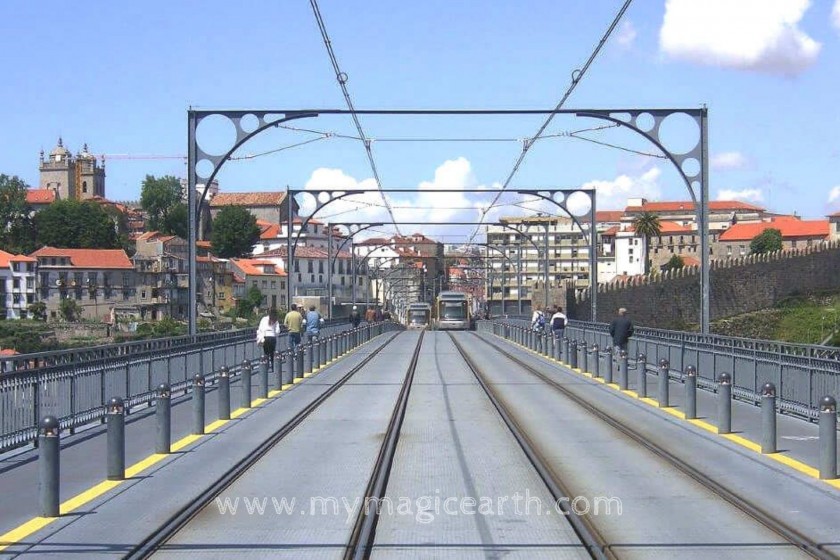
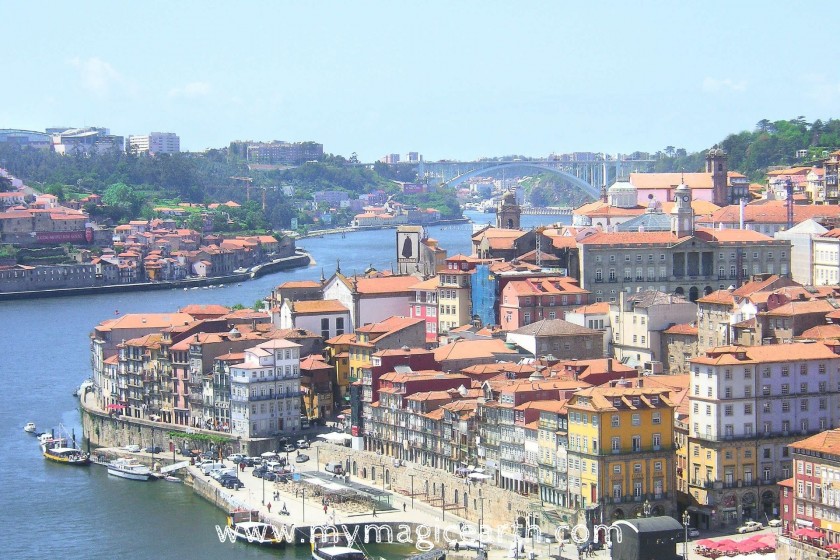
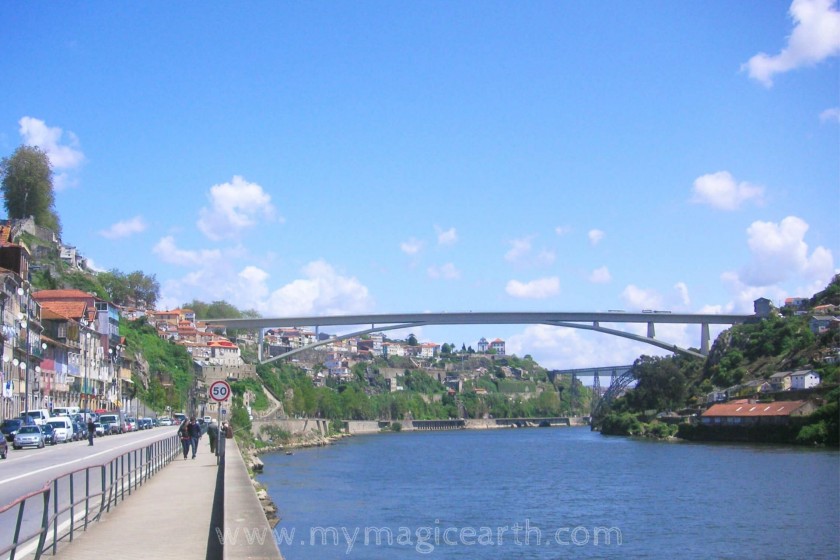
Scenic riverside road Cais de Gaia
Finally, we arrived at Vila Nova de Gaia, the home of cellars of port wine. Before we joined a wine tasting tour, we walked along the scenic riverside road Cais de Gaia, with its cafe terraces and expansive panoramic views across the Douro.
In the evening, many rooftop terraces offer dinners with the twinkling views of the historic centre opposite the Douro river.
It is also possible to discover the historic city of Porto with a combo ticket that provides two days’ access to hop-on hop-off sightseeing bus tours, one Douro river cruise, and one tour of the Calém Port Wine cellars.
Wine tasting in Calem
British discovered port wine at the end of the 17th century, since then the quality of the wine spread all over the world. Nowadays, a large number of the cellars in Vila Nova de Gaia, where most of the port wines are blended and aged, have English names.
Our wine tasting tour took place at Calem. The tour provided not only an insight into the traditional brewing process and but a chance to sample three of the finest Port vintages. The port wine is a fortified wine (20%) made by adding brandy to the wine before fermentation is complete. According to European laws, port wine can only be named as such if the grapes are grown in the Douro valley, and the wine is brewed in Porto.
The Cálem Cellar Tour provides the opportunity to see and hear live Fado performed at Cálem wine cellars in Porto. You will discover the music that’s a part of Portugal’s soul while enjoying the tastes of a white and a special reserve port wine served during the performance.
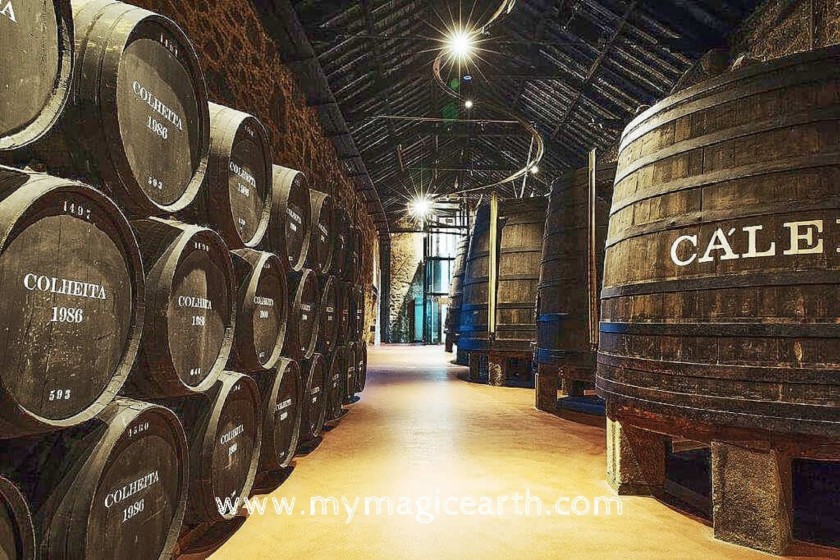
How to get there
By Train
If you travel to other places, such as Lisbon, before heading to Porto, you can take trains to Porto. Visit the national train service website for the connection details.
By Plane
Many international airlines arrive at Porto airport, for example, Lufthansa, KLM, Delta, and British Airway, etc. Take the worry out of your arrival at Porto Airport (OPO) with a pre-booked private transfer from Porto Airport (OPO) to the city center is available. You can relax in the comfort of an air-conditioned vehicle and benefit from a service that only costs you a small budget.
By car
Porto has good highway connections. The highways A1, A20, and A28 all lead to the city of Porto.

Gorgeous photos. Looks like it was a great vacation!